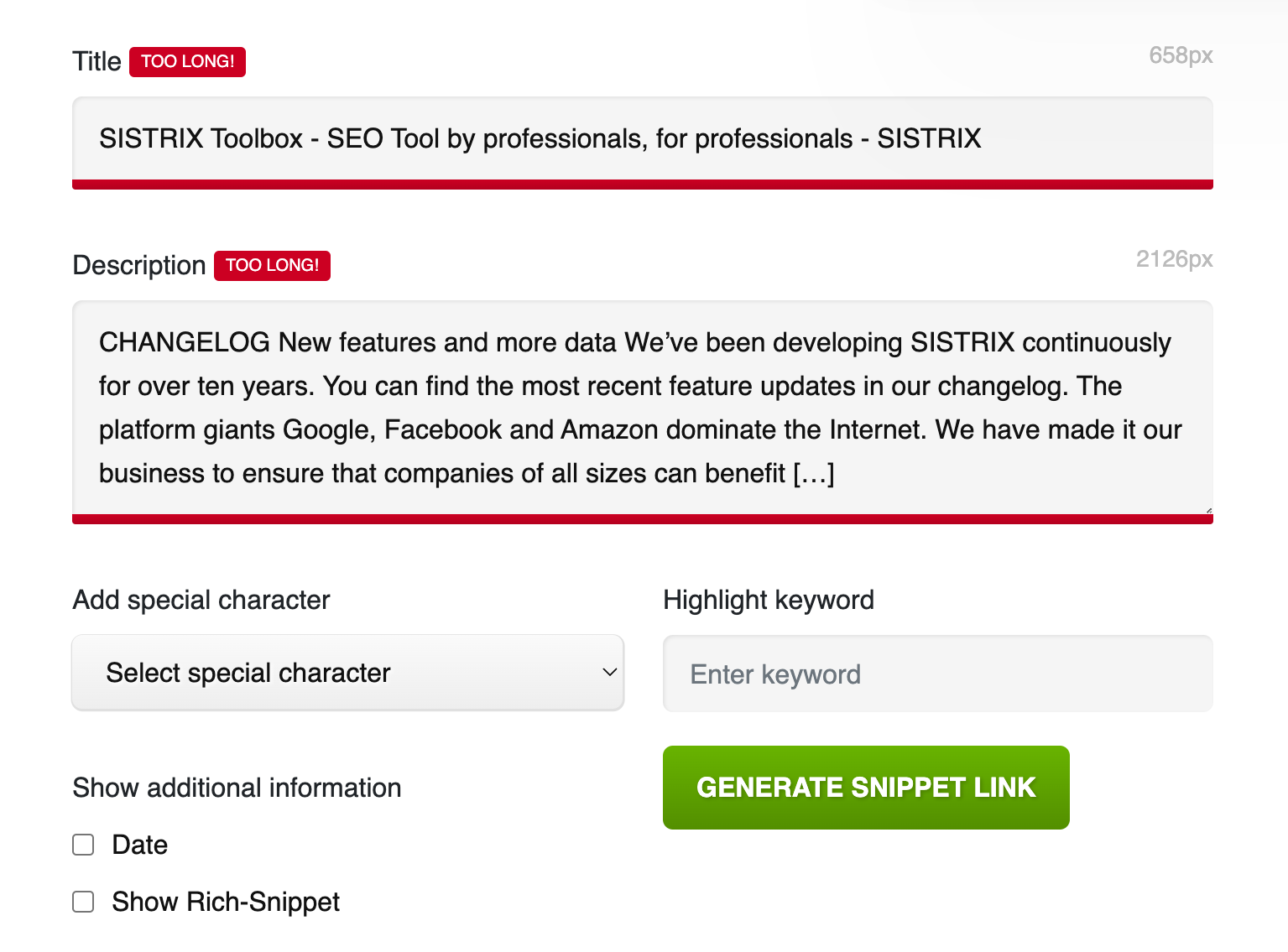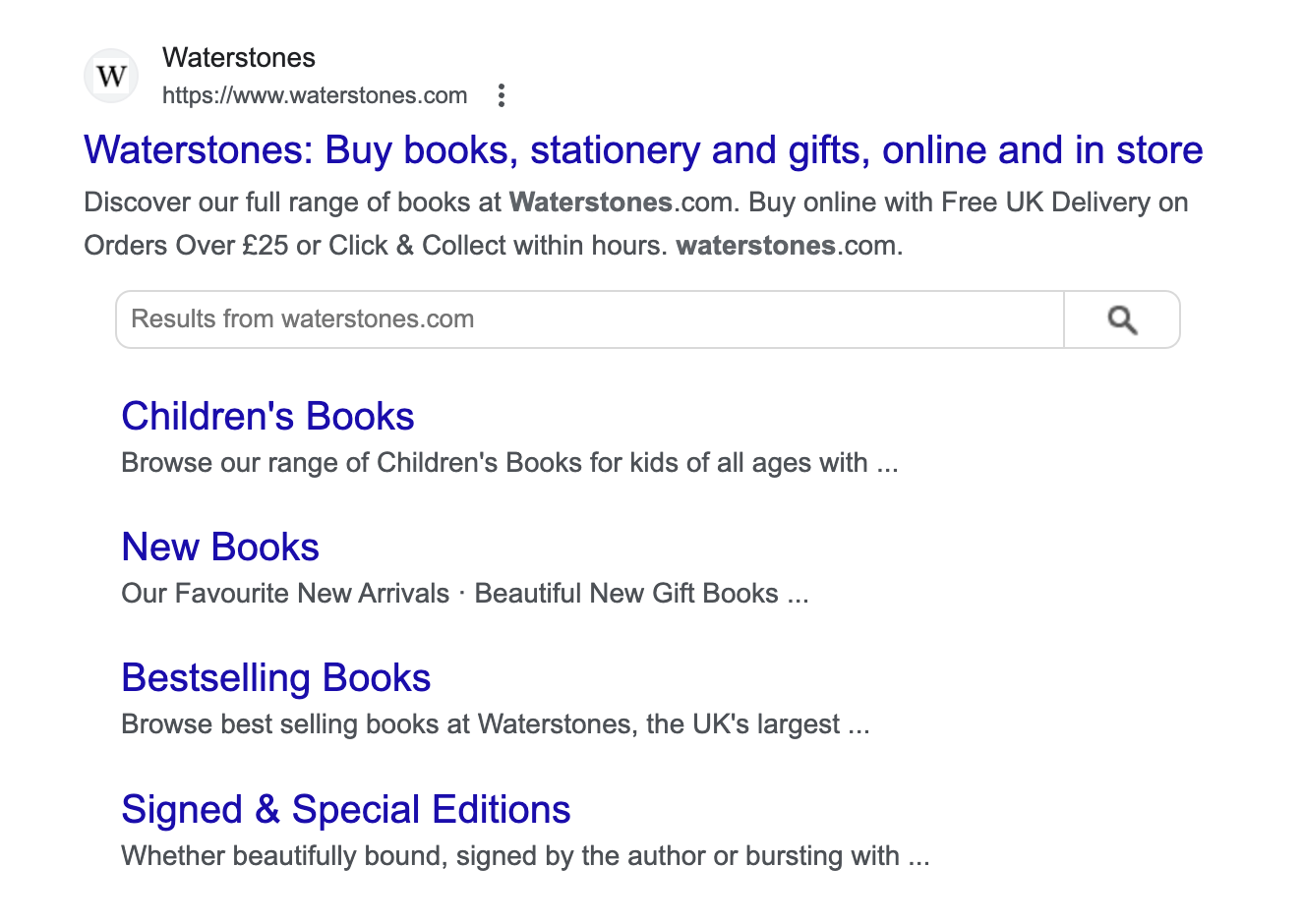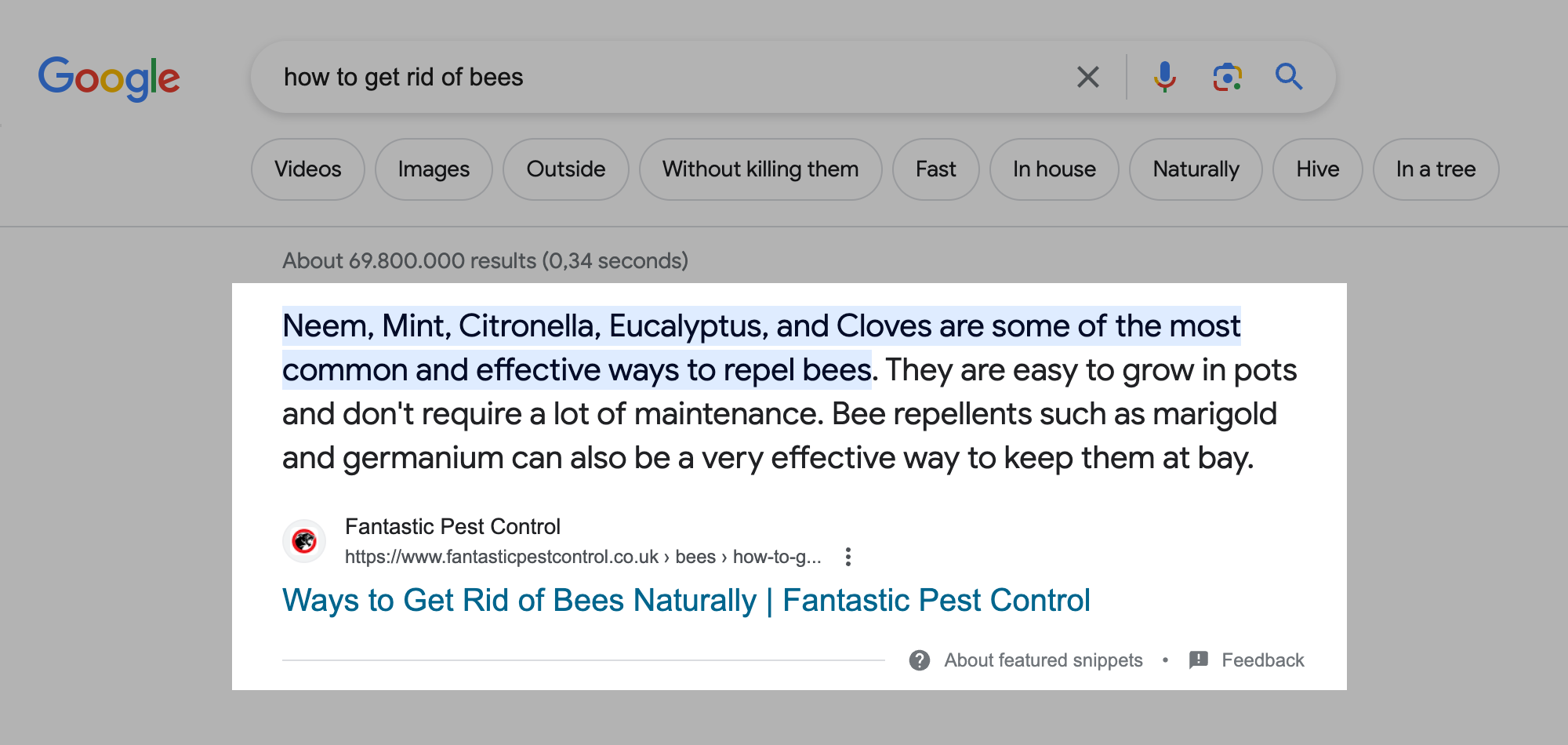Snippets determine the first impression, which is known to be crucial. Here, we look at how you can optimise your snippets for higher click-through rates and a better ranking.
You probably know this from personal experience: which Google search result we click on does not only depend on how high up it is displayed. The snippet also plays a role. More precisely: how the snippet looks and what content it conveys.
Through targeted snippet optimisation, you ensure that more users visit your page. You also encourage a good ranking.
What are snippets, and why are they so important?
Snippets are the search results we get on Google, for example.
They consist of at least three components:
- URL
- Meta title
- Meta description

With Rich Snippets, additional elements such as rating stars or opening hours are included. There are also the so-called Featured Snippets. We will discuss both of these later.
But why are snippets so important?
There are several reasons:
- As already mentioned, a snippet is the first thing potential visitors see on your page. If it gives them the feeling that they will find what they are looking for on your page, the chances of a click increase significantly. The same is true for the other way around.
- Google repeatedly denies that the click-through rate is a direct ranking factor. Nevertheless, a high click-through rate has proven to have a positive effect on rankings in studies, at least over a longer period of time.
- Keywords in the meta title are a ranking factor confirmed by Google.
In summary, snippet optimisation ensures more visitors and a better ranking. That’s why you should never do without it. This is all the more true as this measure does not cost any money, does not take long and is easy to carry out.
How Snippet Optimisation Works
Before you start optimising snippets, do two preliminary tasks:
- Conduct keyword research and define “main keywords” for individual pages.
- Analyse what the key added value of your content is for visitors and what search intents it serves.
Both together are the foundation for snippet optimisation.
Important: Always make sure that the snippet and the target page match. If a search result raises hopes that the page does not fulfil, this has a negative effect on the user experience. Then visitors quickly leave and do not come back. Google also notices both. So in the long run you achieve the opposite effect, even if the click numbers skyrocket in the short term.
If your description does not match the content, the risk that Google will swap it for one of its own also increases.
Title Optimisation
In contrast to the meta description, the meta title is a direct ranking factor. However here, too, it is important to keep both in mind: the searcher and the search engine.
This means:
- Use your main keyword near the beginning of the title.
- Formulate it in such a way that the content of the page is obvious at first glance.
- A call-to-action such as “Order here” can encourage clicks. However, it is always important that you serve the search intent of your target group.
- Make sure that the title has no more than 58 characters so that Google does not cut it off. Ideally, the length should be between 40 and 58 characters.
- Sometimes it is a good idea to include your own brand in the title, especially if it is well-known and attracts clicks. It is best to put it at the end. If it is cut off by Google, this is usually not a big deal.
- It is also important that there is a separate title for each subpage of your website.
Meta Description Optimisation
The meta description is not a direct ranking factor. However, it has a decisive influence on the number of clicks. Ideally, it attracts attention, makes it clear what users can expect on the page and encourages them to click.
You can achieve these goals in the following ways:
- The right length is also important for the meta description. Use a maximum of 165 characters for desktop and 118 characters for mobile devices.
- Incorporate the central keyword of the page into the meta description as well.
- Address the intent of the searchers.
- Make sure that the meta description accurately reflects the content of the respective page.
- Try to keep your sentences short and simple.
- A call-to-action at the end encourages people to click.
- HTML codes can be used to insert special characters such as checkmarks or other symbols. This attracts additional attention. However, overusing such stylistic devices quickly comes across as dubious. Special characters also do not suit every brand or every theme.
Important: There is (unfortunately) no guarantee that Google will use your own meta description for a snippet. In many cases, the search engine creates one itself.
According to John Müller from Google, there are 3 possible reasons for this:
- The meta description describes the page’s content insufficiently.
- Google wants to establish a stronger connection between the search query and the web page, if the meta description does not take into account an essential part of the search query.
- Google tries to link the search query and the content of the page – but the meta description does not (sufficiently) reflect the connection.
Checking Snippet Optimisation
There are many ways you can check snippet optimisation with tools:
- With a snippet generator, you can already see how your snippet will look in the Google search when you create it. It shows you when you have reached or exceeded the right length for the title and description. In addition, you have the option of setting special characters and adding keywords directly from the tool.

- The performance of snippets can be assessed with the help of the Google Search Console. Pay particular attention to the click-through rate (CTR). If this is low, even though the page ranks high for a keyword, this indicates that the snippet needs to be improved.
From Rich Snippets to Featured Snippets – Advanced Snippet Optimisation
In addition to the basic optimisations mentioned above, you can draw even more attention to search results.
Rich Snippets
So-called Rich Snippets contain additional elements such as prices, contact information or event dates in addition to the already known elements. To create them, you need to add structured data to your page. In this way, you also meet the requirements for videos and their information to appear in the video search and for Google to display your information in Knowledge Graphs. On mobile devices, Rich Snippets are often displayed as carousels.
Rich Snippets are very attention-grabbing, provide users with additional information and generate trust (for example through rating stars).
Sitelinks
In some cases, sitelinks that lead to subpages of a website are displayed in snippets, either – as in the following example – large with or small without their own description.

Google decides when to display sitelinks. However, you create the basis with a well-structured page and clever linking.
Featured Snippets
Featured Snippets are fundamentally different from other snippets. They appear as a direct answer to a question at the top of the search results page.

Currently, there are three forms of Featured Snippets:
- Text snippets
- Table and list snippets
- Video snippets
Featured Snippets are almost exclusively displayed for informative search queries. If you want Google to create Featured Snippets from your content, you have to optimise it accordingly.
For example, formulate paragraphs with one or two short sentences that give concrete answers to wh-questions.
Important: Featured Snippets are a double-edged sword. On the one hand, they can increase brand awareness through their high visibility. On the other hand, there is a risk that searchers will no longer click on any snippet at all because the Featured Snippet has answered their question sufficiently.
Conclusion
Snippet optimisation is one of the fundamental measures of search engine optimisation. It is a simple way to increase traffic and positively influence the ranking of pages. For some time now, Google has also opened up additional possibilities for highlighting snippets and enriching them with further information.
Take advantage of these opportunities where possible by optimising content accordingly. With a little skill and luck, your pages will get more attention in the highly competitive market.